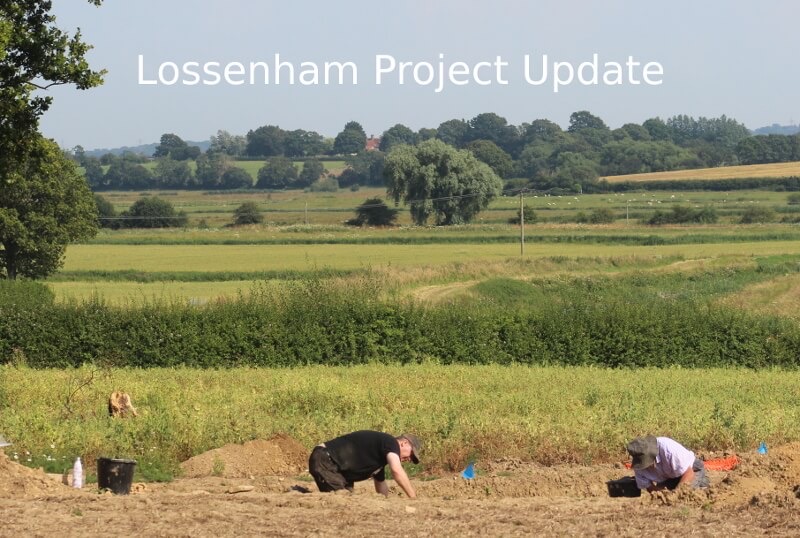Åke Nilson has delivered talks on local history for many years. They are always well attended and fascinating. He has been involved with the Lossenham Project, the archaeological dig on Lossenham Farm in Newenden, since its inception and he introduced his audience to the aims and aspirations of the project, as well as the exciting discoveries made over the last two summers.
The project is community-based and involves villagers and other locals in the dig as volunteers. There is a resident artist, Russell Burden, and a visiting artist, this year musician Paul Cheneour, and both create art inspired by the setting of the farm. Examples of music and art can be found on the project website.
Åke showed beautiful, atmospheric photos of Lossenham Farm. It’s not serious all the time on the farm and Åke also showed photos of the volunteers and professional archaeologists relaxing at a summer barbecue.
After the interval, Åke described in more detail the archaeological discoveries. The Carmelite Priory was established in the 13th century on land given by the Aucher family, the owners of Lossenham Manor. The priory was destroyed at the time of the dissolution of the monasteries in the 16th century. After two summers of work the main outline has now been uncovered. Most of the stonework has been robbed out but there is enough evidence to be able to chart the ground plan.
There was uncertainty where to begin the dig but, with hindsight, the Google Earth image, easily found on the internet, clearly shows the outline of the priory church, which was hidden in plain sight. The cloisters, the refectory and the shape of ancillary buildings have now been revealed and many tiles, some highly decorated, have been unearthed. Other finds include a beautiful mediaeval copper alloy harness pendant.
The audience was thrilled to learn that the archaeologists have discovered the remains of Roman building work beneath the site of the Carmelite Priory. They’ve also found Roman pottery and a Roman coin, leading them to think that a Romano / British farmstead occupied the same site, overlooking the river Limne (as the Rother was called in Roman times), some 11 or 12 centuries before the Carmelites arrived.

Åke announced that the Lossenham Project has just received permission from Historic England to dig on Castle Toll. This ancient monument on Lossenham Farm, close to the point where the Hexden Channel and the Rother converge, has had military significance for many centuries. It may have been fortified since the Iron Age, and is, possibly, the site of one of King Alfred’s forts protecting England against the Vikings. Åke preferred not to surmise further and will let the archaeologists present their evidence in the coming years.
Thanks to Åke’s generosity in presenting the talk on behalf of the Friends of St Peter’s Church, donations amounting to more than £250 were raised, to help pay for extensive renovations in St Peter’s which the PCC has recently set in motion.
Looking for a Christmas present with a difference? Ake’s book, Essays on Early Newenden is available to buy online now.
Image Credits: Anthony Dawson .



